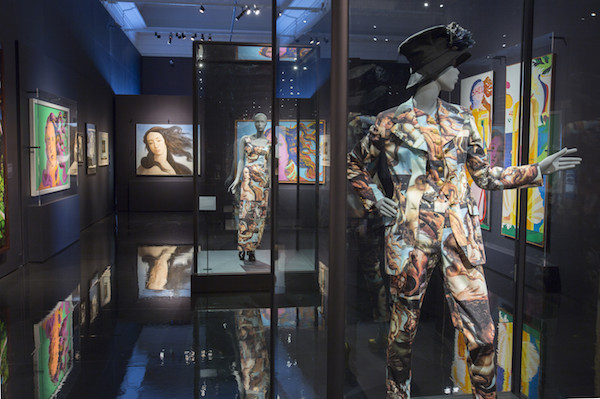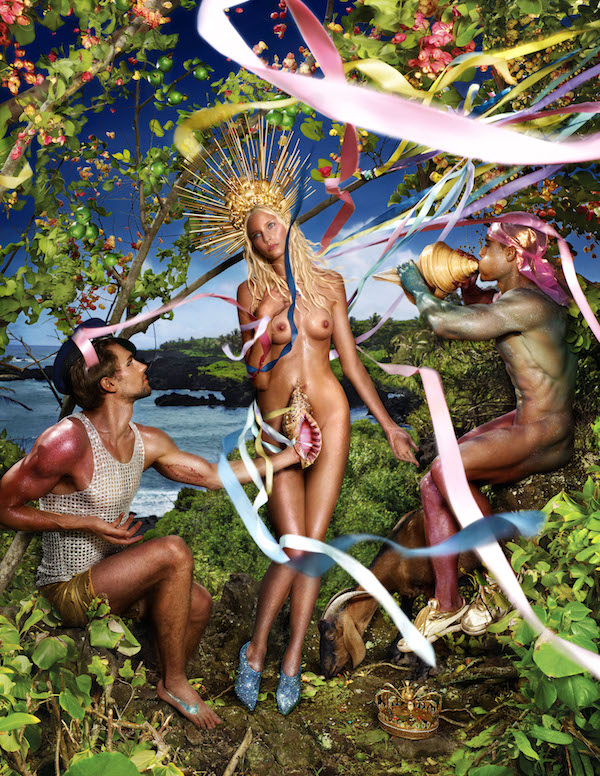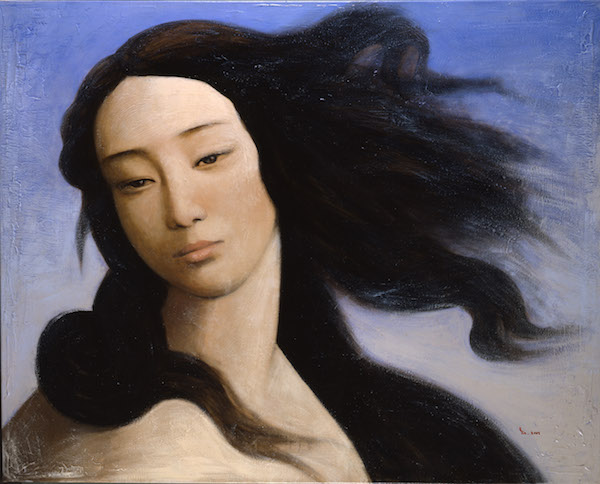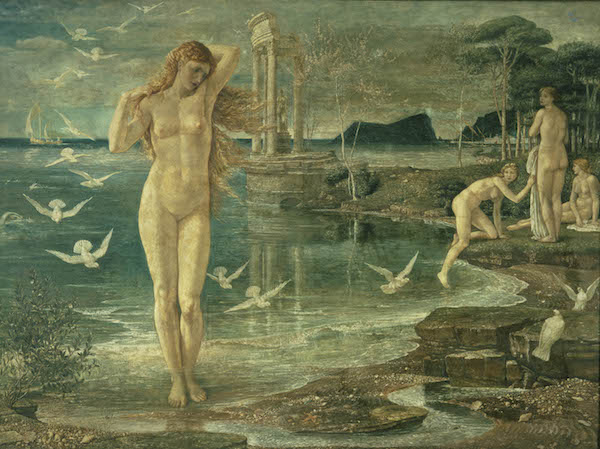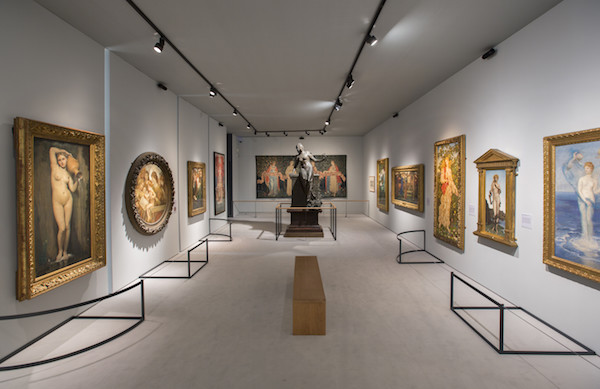The V&A explores the impact and Influence of Italian Renaissance painter, Sandro Botticelli (1445-1510) in new exhibition, Botticelli Reimagined.
I had the great luck and pleasure of visiting the Uffizi Gallery in Florence a couple weeks back. The gallery is a rambling and overflowing (if not slightly rundown) collection of and testament to Italian art. One room - perhaps the of the Gallery’s most prized room and my favorite- holds a collection of Botticelli paintings, including the Birth of Venus (1484) and La Primavera (1482). The flatness, boldness and vibrancy of Botticelli’s work, combined with his shrewd handing of color, and ethereal, yet weighty figures have made the imagery of his quintessentially Renaissance work timeless.
Unfortunately, due to their delicate nature, these paintings, which have only left Florence a handful of times in the past, will likely stay in the Uffizi forever. The only way to see these seminal and enduring works is by a trip to the capital of Tuscany.
Fortunately, and to my great pleasure, the V&A has brought Florence and Botticelli to London, and they are doing it with a fresh, thoughtful and wholly original approach. Botticelli Reimagined contains over 50 of Botticelli’s paintings and drawings, making it the largest exhibition of his work in the UK to date. In addition to the impressive collection, the exhibition showcases a cache of contemporary and Pre-Raphaelite works informed and inspired by Botticelli.
“Sandro Botticelli is one of the greatest artists of the Renaissance and 500 years after his death his celebrated imagery has come full circle to represent a contemporary ideal of beauty. This ambitious exhibition considers his legacy and shows how and why it has suffused into our collective visual memory.” Said Martin Roth, Director of the V&A.
To investigate just how Botticelli’s imagery has permeated our collective conscious and inspired generations of artists, Botticelli Reimagined is divided into three parts, housed in three connected gallery spaces. The first, Global, Modern, Contemporary, sometimes honors and sometimes challenges the idealism of Botticelli’s lasting imagery, the second, Rediscovery shows Botticelli’s influence over Pre-Raphaelite painters and the third, Botticelli in his Own Time, pays homage to the artist by housing an impressive collection of his works.
Global, Modern, Contemporary
The first exhibition room is black, sleek and reflective- a statement and parallel to the contemporary art it holds. A screen playing scenes from Dr. No (the shell collecting Ursula Andress) and The Adventures of Baron Muchausen (Uma Thurman emerging from a conch as Venus) greets viewers. The inside of the gallery space assaults viewers with sometimes gaudy and many overtly sexual reinventions of the Venus, like David LaChapelle’s Rebirth of Venus (2009). The collection also includes two Venuses reinterpreted by pop artist Andy Warhol, a hermaphroditic Venus by Joel-Peter Witkin, Vik Muniz’s Venus made from industrial and domestic waste and two Venus adorned pieces from Dolce & Gabbana’s Spring/Summer 1993 collection.
“It was really important for us to start with contemporary work, with all these images that we are all very familiar with, but we have lost track of the source of inspiration. So if Botticelli is global and modern and contemporary, we don’t recognize it at first sight. Here, we are trying to…peel off the many layers of reinventions of Botticelli and try to show you the source of inspiration.” Said Ana Debenedetti, a co-curator of the exhibition.
While the works in the section are clearly influenced by Botticelli, many of them challenge and parody him. Botticelli is considered one of the greatest painters of female nudes. The soft curves, white skin, flowing hair and elfin features of his female figures (think the creamy skinned and voluptuous Venus or the dewy, nymph-faced and nubile Flora) have long been praised as “ideal”.
Several works not only appropriate, but also dispute “ideal” nature of Botticelli’s figures. Some, like Xin Yin’s Venus After Botticelli (2008) reimagine the Venus as non-white woman, while others put the Venus into alternative geographic and cultural contexts, like Tomoko Nagao’s superflat reinterpretation, The Birth of Venus with baci, esselunga, barilla, PSP and easyjet.
The exhibition also includes several feminist works of art, by the likes of Cindy Sherman, Ulrike Rosenbach and Orlan, which challenge the male gaze and force viewers to evaluate how society portrays and interprets female figures and femininity. These thought-provoking works are where the exhibition shines brightest.
Rediscovery
The second gallery space is rather underwhelming when compared to the other two. Rediscovery houses works by Pre-Raphaelite painters who were inspired by Botticelli’s work. Botticelli was underappreciated in his own age and was rediscovered and fervently lauded in the mid 1800s. Pre-Raphaelites, taken by the beauty, simplicity and purity of Botticelli’s work, often copied his works as part of their education. The collection includes Edgar Degas’ and Gustave Moreau’s copies of the Birth of Venus, along with several drawings and studies by other nineteenth century artists.
The collection also includes a handful of Pre-Raphaelite nudes, which are pleasant but don’t pack as much of a punch as Botticelli’s work or the contemporary art.
Botticelli in his Own Time
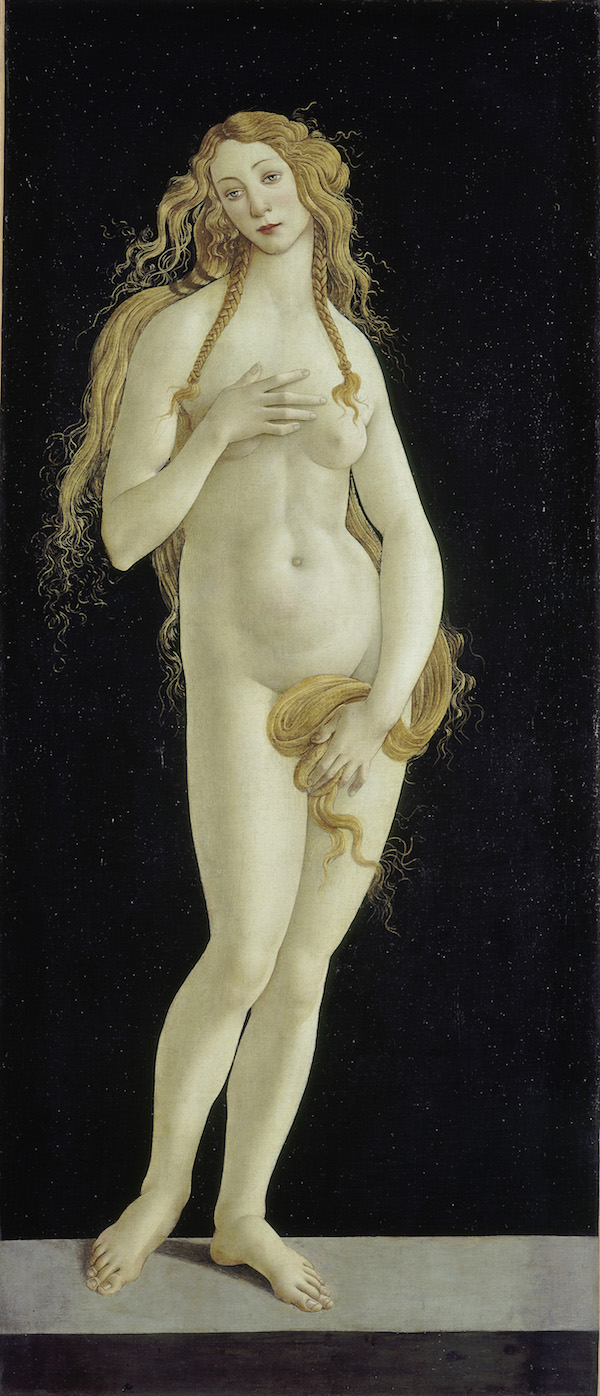
Venus, Sandro Botticelli, 1940s, Gemäldegalerie Staatliche Museen zu Berlin Preußischer Kulturbesitz, photo courtesy of Volker-H. Schneider
The final room houses an impressive collection of Botticelli’s paintings and drawings, which deserves a visit from anyone interested in the artist or Renaissance art in general. The room is lined with paintings of the Madonna and Child, portraits of Italian nobles, and scenes from mythology and Dante, which were completed by Botticelli and his successful workshop.
The highlight of Botticelli in his Own Time is Pallas and the Centaur (1482), a monumental, mythological and hyper-detailed work. It is in London from the Uffizi for the first time and gives the exhibition the credibility it needs to succeed. Another highlight is the two full-length paintings of Venus (recognizable from the Birth of Venus) that close the exhibition.
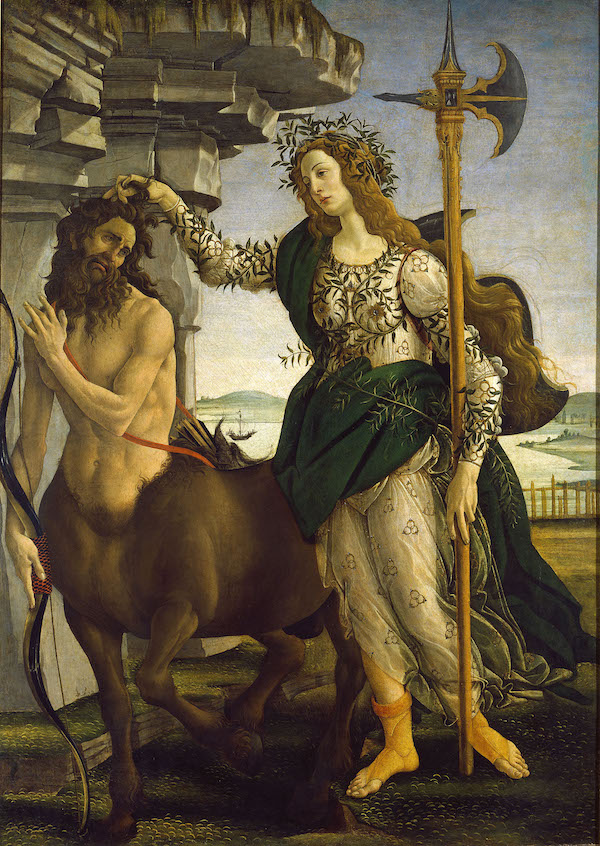
Pallas and the Centaur, Sandro Botticelli, 1482, Galleria degli Uffizi, Florence, 2015, Scala Florence- courtesy of the Ministero Beni e Att. Cultura
Botticelli Reimagined is a must visit for any Botticelli or Renaissance art aficionado. The V&A gracefully charted Botticelli’s career and influences and provides a fresh take on his work. Here he is presented not as a stodgy old master, but as a salient and relevant artist that will continue to inspire generations to come.
Botticelli Reimagined is on display at the Victoria and Albert Museum in Room 39 (Exhibition Space), 5 March 2016 - 3 July 2016,
Cost: £15 for non-members, free for members
Book online or call 0800 912 6961
